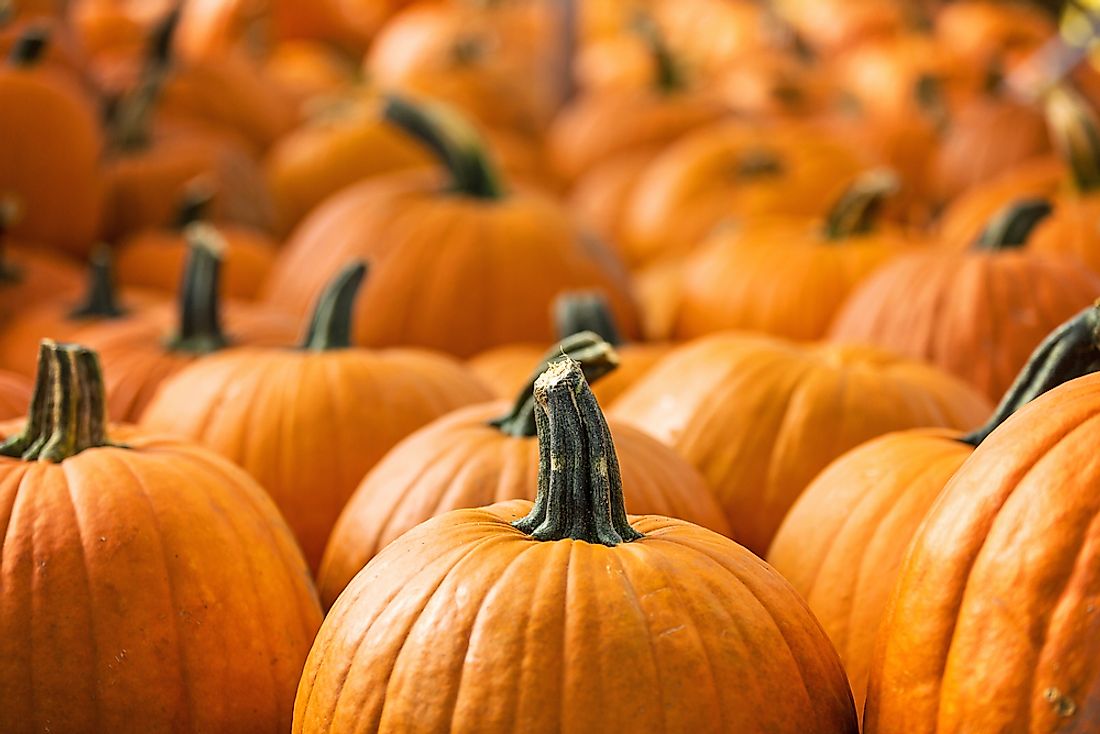What is the World's Largest Pumpkin?

In today’s competitive world, passionate and dedicated people go beyond limits to break unthinkable records. Such is the case when one looks at the history of giant pumpkin competitions as farmers continuously break records that were seemingly impossible less than a century ago. By hooks and crooks, passionate pumpkin farmers research and care for these plants for extended periods to achieve the ultimate records. To many, a pumpkin is just a vegetable or fruit but to Mathia Willemijns and a few other farmers, it is a race to achieve the biggest pumpkin. The question to ponder on is, what makes a farmer want to produce the best and biggest pumpkin in the world?
The World’s Largest Pumpkin
On October 9, 2016, in Ludwigsburg, Germany at the Great Pumpkin Commonwealth (GPC), Belgian Mathia Willemijn’s broke the 2015 record for growing the world’s largest pumpkin. Historically, the US and Canada have dominated the competition but European countries have proved to be forces to reckon with since 2014. Willemijn’s behemoth pumpkin weighed a massive 2,624.6 pounds. For a better understanding of how massive this pumpkin was, it is good to know that the average weight of a pumpkin ranges between 12 to 18 pounds with extra-large ones averaging between 20 to 25 pounds. What these weights mean is that Willemijns’ pumpkin is over 100 times the weight of an extra-large pumpkin, a fact that would make fans of pumpkin juice and pumpkin pies to salivate.
History of the Largest Pumpkin Competitions
Giant pumpkin competitions have been present for more than 100 years with the earliest verifiable records indicating that the competitions occurred in the year 1900. In this year, William Warnock won with his 400-pound pumpkin, a record he broke in 1904 after presenting a 403-pound pumpkin. The 1900 competitions occurred at Paris World’s Fair whereas the 1904 one was at the St. Louis World’s Fair. Howard Dill, through his Dill's Atlantic Giant Pumpkin outfit, broke the record twice with his 1980’s 459 pound and 1981’s 493.5-pound pumpkins. Dill remains the founder and father of growing giant pumpkins. In 1989 and 1990, Gordon Thomson and Ed Gancarz recorded 755 and 816.5 pounds of pumpkins respectively and thereafter, Herman Bax broke the record with a 990 pounds pumpkin in 1994. By this time, there was a silent consensus that a pumpkin weighing 1,000 pounds was impossible but, in 1996, Nathan and Paula Zehr overcame this myth by recording a1061 pounds pumpkin. Between 1998 and 2011, farmers broke thirteen records, all below the 2000-pound mark. Ron Wallace presented a 2009-pound pumpkin in 2012 followed by another record from Tim Mathison recording 2032 pounds in 2013. In 2014, Beni Meier set a new record of 2323.7 pounds which Willemijns broke in 2016.
How Farmers Achieve These Record Breaking Weights
Farmers have worked for decades to develop different scientific and technical formulas for breeding giant pumpkins weighing more than a small car. The most basic practices involve keeping the plants in optimum temperatures with a continuous supply of nutrients while protecting them from drying or cracking. Some farmers go to the extent of covering them at night for warmth. To start with, farmers get champion seeds thanks to Dill’s research and pollinate them with big pumpkin plants resulting into bigger pumpkins. During growth, xylem and phloem tissues play big roles by transporting water and sugar respectively. Giant pumpkins have bigger phloem and smaller xylem tissues, therefore, supplying more sugar than water as compared to normal pumpkins that have bigger xylem. The other technique that farmers use is the introduction of mycorrhizal fungi which colonize pumpkin roots and regulates the absorption of water and nutrients in exchange for carbohydrates whereas some farmers even claim that pouring milk on pumpkins provide more calcium while to the extreme, others even talk to their pumpkins. Another critical issue that farmers handle has to do with physics because ordinarily a giant pumpkin would sag under its weight and crack if the growth is rapid. Ideally, it is important for the farmer to ensures that the pumpkin does not grow rapidly and that after sagging, it rests on a conducive ground.
Why Would Anyone Want to Grow a Giant Pumpkin?
Although record-breaking winners like Willemijns win thousands of dollars in prize money, it turns out this may not be enough compensation for all the effort, time, and finances that went into breaking the record. The question as to why people grow giant pumpkins is hard to answer but, maybe it is for pride, passion, or tradition. People spend over forty hours a week caring for pumpkins and push themselves to prove that the sky may not be the limit after all.











